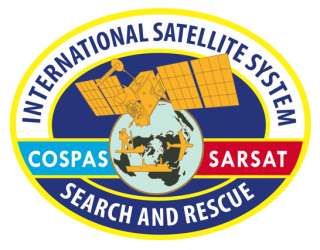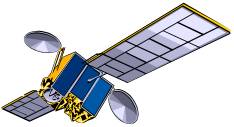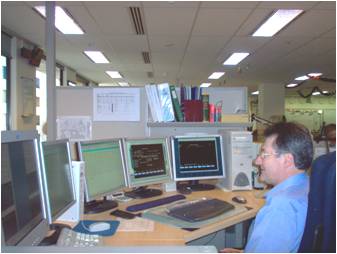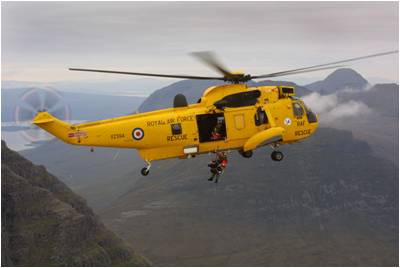Introduction
The International Cospas-Sarsat Programme initiated the development of the Medium-altitude Earth Orbiting Satellite System for Search and Rescue (MEOSAR system) in 2004, with SAR repeaters placed on the satellites of the Global Navigation Satellite Systems (GNSS) of Europe (Galileo), Russia (Glonass) and the USA (GPS). Early operational capability (EOC) data from the MEOSAR system will be available from late-2016 and full operational capability (FOC) of the system is anticipated in 2018. MEOSAR will initially complement the existing LEOSAR (satellites in low-altitude orbits) and GEOSAR (satellites in geostationary orbit) systems, and will eventually replace the LEOSAR system.
The Cospas-Sarsat System
The Cospas-Sarsat System is comprised of:
- distress radiobeacons (ELTs for aviation use, EPIRBs for maritime use, and PLBs for personal use) which transmit signals during distress situations,
- instruments on board satellites which detect the signals transmitted by distress radiobeacons,
- ground receiving stations, referred to as Local Users Terminals (LUTs), which receive and process the satellite downlink signal to generate distress alerts, and
- Mission Control Centers (MCCs) which receive alerts produced by LUTs and forward them to Search and Rescue Points of Contacts (SPOCs).
The current operational Cospas-Sarsat System includes two types of satellites:
- satellites in low-altitude Earth orbit (LEO) which form the LEOSAR System,
- satellites in geostationary Earth orbit (GEO) which form the GEOSAR System.
The future Cospas-Sarsat System will include satellites in medium-altitude Earth orbit (MEO). Once fully operational, the MEOSAR system will provide global coverage and near-real-time beacon detection and independent location.
The MEOSAR System
Global Navigation Satellite System (GNSS) satellites orbit the Earth at an altitude between 19,000 and 23,000 km, a range considered as medium-altitude Earth orbit. Hence this component of Cospas-Sarsat is known as the Medium-altitude Earth Orbit Search and Rescue system, or MEOSAR. It will complement the existing LEOSAR and GEOSAR systems.
The current LEOSAR and GEOSAR systems that detect and locate distress beacons have shortcomings that MEOSAR will overcome. The GEOSAR system constantly covers the entire Earth except the high-latitude (i.e., polar) regions. While the GEOSAR system can receive beacons distress messages across most of the globe, it cannot locate a beacon unless the location is encoded in the beacon’s message from a local navigation (GNSS) receiver. The LEOSAR system can locate a beacon without location information being transmitted in the beacon message (or can confirm the location even if positon information is transmitted in the beacon message), but the LEOSAR satellites have a view of only a small part of the Earth at any given time, which at times creates a delay in the distress signal reaching a ground station. While LEOSAR and GEOSAR still provide valuable search-and-rescue capabilities, MEOSAR is a revolution in technology.
Once fully operational, the MEOSAR system will offer the advantages of both the LEOSAR and GEOSAR systems without their limitations by providing transmission of the distress message and independent location of the beacon, with near-real-time worldwide coverage. The MEOSAR system will facilitate other planned enhancements for Cospas-Sarsat beacons, such as a return-link-service (RLS) transmission to a distress beacons that will provide, for example, the user with a confirmation that the distress message has been received.
The large number of MEOSAR satellites that will be in orbit when the system is fully operational will allow each distress message to be relayed at the same time by several satellites to several ground antennas, improving the likelihood of quick detection and improving the accuracy of the location determination.
At the beginning of 2013, Cospas-Sarsat entered a Demonstration and Evaluation (D&E) phase for the MEOSAR system to show that MEOSAR performance meets expectations, and that distress alerts received by SAR authorities from the MEOSAR system have the required reliability and accuracy.
The MEOSAR early operational capability (EOC), where distress alerts provided by the MEOSAR system are provided to SAR authorities for operational use, began in December 2016. The EOC phase will be followed by the initial operational capability (IOC) phase that will provide improved MEOSAR performance. When enough MEOSAR satellites and commissioned ground stations (MEOLUTs) are available to provide worldwide, near-real-time coverage, the MEOSAR system will be declared at full operational capability (FOC), which is anticipated in 2018.
The MEOSAR System Concept








